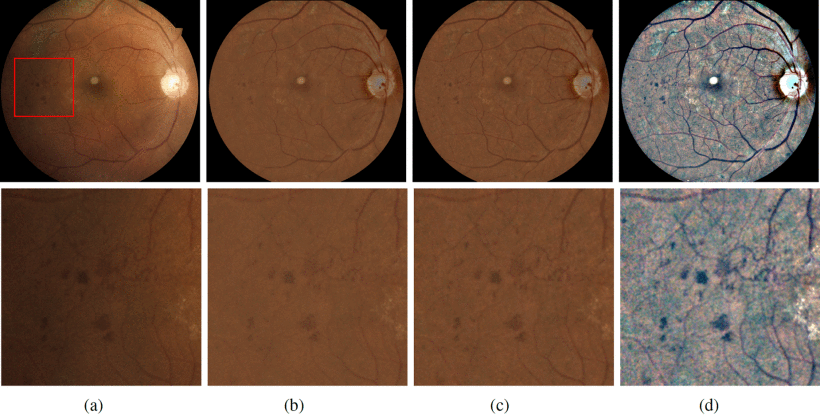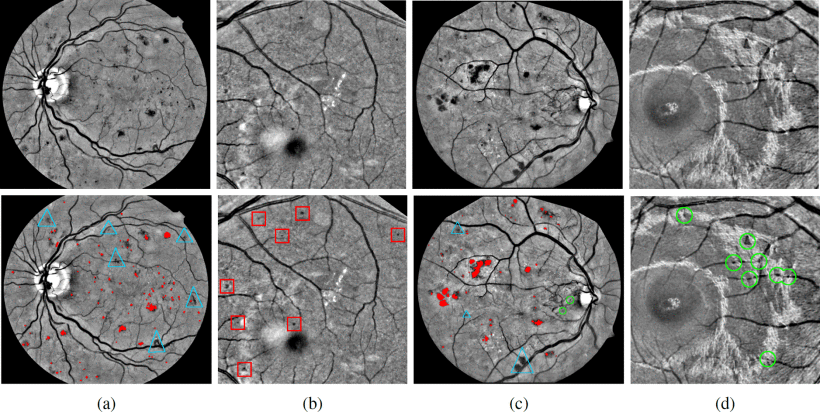EDITORIAL
Our management team is preparing to publish the 2016 annual report, the annual symposium in May, and the annual general meeting of members to adjust the focus in our practices and work. In addition, we have four renowned speakers from a variety of international research centers, three of which are distinguished lecturers elected by either IEEE Solid-State Circuits Society or IEEE Circuits and Systems Society (seminars, ReSMiQ symposium). We serve our members and promote conditions for student researchers to foster their abilities to innovate.
On 22nd March, the Symposium of the Electronic Industry Group (RIE) entitled “Electronics for the People” was held at Polytechnique Montréal. The RIE aims to bring together manufacturers, service companies and partners who demonstrate their intention to promote and contribute to the objectives of the corporation and to stimulate the Québec industry. ReSMiQ was a partner of this event and several of its members participated as speakers and panelists. Gabriela Nicolescu of Polytechnique Montréal presented the conference “Modeling and analysis of 3D multiprocessors on chip for the future cloud computing” and Mohamad Sawan of Polytechnique Montréal presented the closing conference “Intelligent medical devices: industrial opportunities and rewarding research” . Daniel Massicote of the UQTR was invited to participate in the roundtable “Carrier niches for the electronics industry: How to access it? “. The symposium participants were invited to visit the PolyFab laboratory. More details
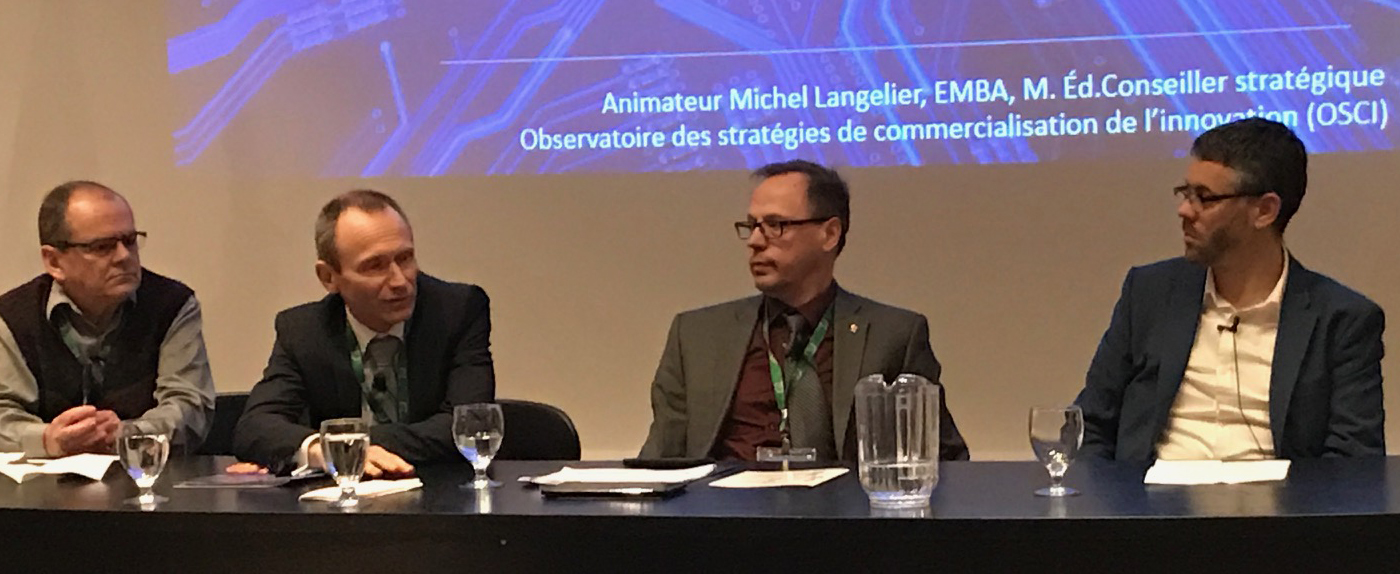 De gauche à droite: Luc Péloquin – CNRC, Jean-Louis Moreau – CAE, Daniel Massicotte – UQTR, Thierry Pagé – Univalor.
De gauche à droite: Luc Péloquin – CNRC, Jean-Louis Moreau – CAE, Daniel Massicotte – UQTR, Thierry Pagé – Univalor.
ReSMiQ is a group of researchers in an interuniversity research center that can count on the support of the Fonds de recherche du Québec – Nature et technologies (FRQNT) and nine (9) Quebec universities involved in microsystems research.
NEWS FROM OUR MEMBERS
Exposure
– Dr. Martel from Polytechnique Montréal and his team from the Nanorobotics Laboratory received the Québec Science Discovery of the year 2016 Award, for their major breakthrough in cancer research.
More details
– Dr. Gosselin from Université Laval will address a keynote presentation at the IEEE Research boost conference to be held at the École de technologie supérieure in Montréal, on April 6, 2017.
More details
Achievement
– Dr. Shi from Université Laval received a strategic partnership grant from NSERC for « Integrated mid-IR photonics enabling ubiquitous sensing ».
RESMIQ’S ACTIVITIES
Intensive course
Yen-Kuang Chen from Intel Corp. in the U.S.A. presented the seminar entitled «Challenges and Opportunities of circuits and systems on Internet of Things» as well as Manuel Delgado-Restituto from the Instituto de Microelectronica de Sevilla in Spain presented the seminar entitled «Neural Spike Recording for Brain-Machine Interfaces» at Polytechnique Montréal, organized as part of our continuing training program in collaboration with the IEEE Montréal’s chapters of the Solid State Circuit Society (SSCS) and the Circuits and Systems Society (CASS).
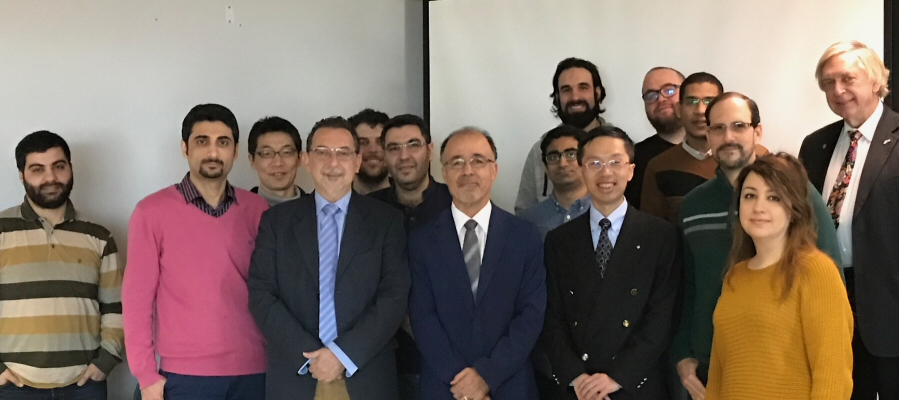
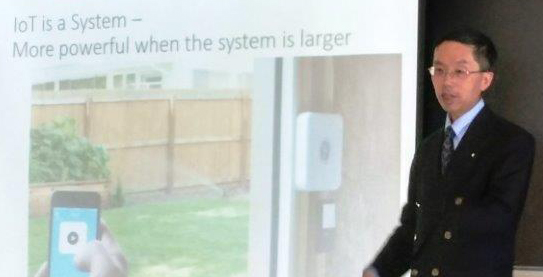
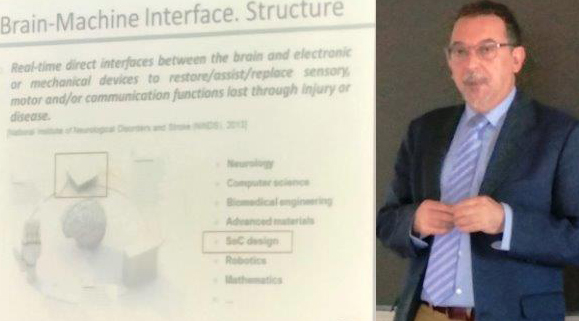
See the abstracts: Yen-Kuang Chen / Manuel Delgad-Restituto
Scientific poster competition – Call for proposals
SUBMISSION DEADLINE: April 3 2017
More details
SIGNAL is the main monthly information medium of the Microsystems Strategic Alliance of Québec (ReSMiQ). This newsletter aims to be an active link between the members of ReSMiQ and all individuals who have an interest in research and innovation in microsystems. We commit ourselves to promote in it our members’ research and increase ReSMiQ’s visibility.
ReSMiQ is a group of researchers in an interuniversity research center that can count on the support of the Fonds de recherche du Québec – Nature et technologies (FRQNT) and nine (9) Quebec universities involved in microsystems research.




